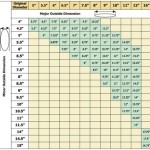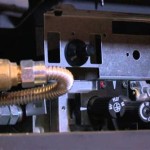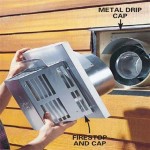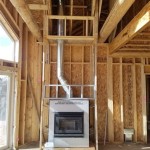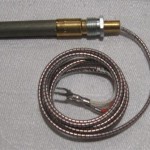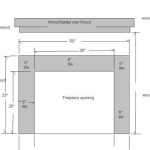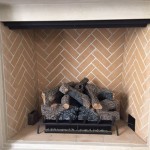Do Electric Fireplaces Give Off Heat?
Electric fireplaces are becoming increasingly popular as a convenient and aesthetically pleasing alternative to traditional wood-burning or gas fireplaces. A major consideration for potential buyers is whether or not these units effectively provide heat. The answer is definitively yes, electric fireplaces are designed to give off heat. However, the amount of heat produced, the efficiency of heat distribution, and the functionalities that control the temperature all vary depending on the model and design.
The primary function of an electric fireplace extending beyond visual appeal is to generate supplemental heat for a room. These devices typically utilize either radiant heating or a forced-air system to accomplish this. Understanding how these heating mechanisms operate is critical to evaluating the heating capabilities of an electric fireplace.
How Electric Fireplaces Generate Heat
Electric fireplaces primarily employ two heating technologies: radiant heating and forced-air heating. Radiant heating relies on infrared radiation to directly warm objects and people in the room. This type of heat is similar to the warmth experienced under the sun. Units utilizing radiant heating often feature quartz bulbs or infrared coils that emit heat waves into the surrounding area. The advantages of radiant heating include quiet operation and the immediate sensation of warmth. However, radiant heat is most effective within a limited radius of the fireplace.
Forced-air heating, on the other hand, functions by drawing air into the fireplace unit, heating it using an electric coil, and then circulating the warmed air back into the room with a fan. This method provides more even heat distribution throughout a larger space compared to radiant heating. The forced-air system allows for faster heating of the room, although the fan can produce a noticeable hum during operation.
Many electric fireplaces offer adjustable thermostat settings, allowing users to precisely control the desired room temperature. Some models also include multiple heat settings, ranging from low to high, providing flexibility in managing energy consumption and heat output. Advanced models may even feature a timer function for automated operation.
Factors Affecting Heating Capacity
The heating capacity of an electric fireplace is measured in British Thermal Units (BTUs) or watts. A BTU is the amount of heat required to raise the temperature of one pound of water by one degree Fahrenheit. Most electric fireplaces are rated between 4,000 and 5,000 BTUs, which translates to roughly 1,200 to 1,500 watts. This level of heat output is generally sufficient to warm a room of approximately 400 to 500 square feet.
Several factors influence the actual heating performance of an electric fireplace. Room size is a crucial determinant; a larger room will require a fireplace with a higher BTU rating to effectively raise the temperature. The insulation of the room also plays a significant role. Poorly insulated rooms will lose heat more quickly, requiring the fireplace to work harder and potentially resulting in higher energy bills.
The placement of the electric fireplace can also impact its heating efficiency. Positioning the unit in a central location within the room can facilitate better heat distribution. Obstructions such as furniture or curtains can impede the airflow, reducing the fireplace’s effectiveness. Furthermore, the ambient temperature of the room will impact how quickly and efficiently the electric fireplace can elevate the room's temperature.
Energy Efficiency and Cost Considerations
Electric fireplaces are generally considered to be more energy-efficient than traditional fireplaces. They convert nearly 100% of the electrical energy into heat, minimizing energy waste. In contrast, wood-burning fireplaces can lose a significant amount of heat through the chimney. Gas fireplaces also experience some heat loss through the venting system.
The cost of operating an electric fireplace depends on several factors, including the wattage of the unit, the local electricity rate, and the frequency of use. A 1,500-watt electric fireplace, running on its highest setting, will consume 1.5 kilowatt-hours (kWh) of electricity per hour. At an average electricity rate of $0.15 per kWh, the cost of operation would be approximately $0.23 per hour. Using lower heat settings or utilizing the thermostat to maintain a consistent temperature can significantly reduce energy consumption and operating costs.
When comparing electric fireplaces to other heating options, such as central heating systems or space heaters, the overall cost-effectiveness will depend on individual circumstances. Electric fireplaces are best suited for supplemental heating in specific rooms, rather than as a primary heating source for an entire home. Their efficiency lies in their ability to provide targeted warmth without the need to heat the entire house.

Does Electric Fireplace Give Off Heat Simple Explanation

Do Electric Fireplaces Give Off Heat Here S What To Know Before You Buy Hunker

Fireplace Facts Myths Do Electric Fireplaces Give Off Heat Stylish

Do Electric Fireplaces Give Off Heat Electronicshub

Do Electric Fireplaces Give Off Heat Essential Home And Garden

Do Electric Fireplaces Give Off Heat Direct Learning Center

Which Electric Fireplace Gives The Most Heat Direct Fireplaces

Do Electric Fireplaces Give Off Heat Capo Fireside

Do Electric Fireplaces Give Off Heat Or Are They Just For Show

Does An Electric Fireplace Give Off Heat Fascinated Home
Related Posts

